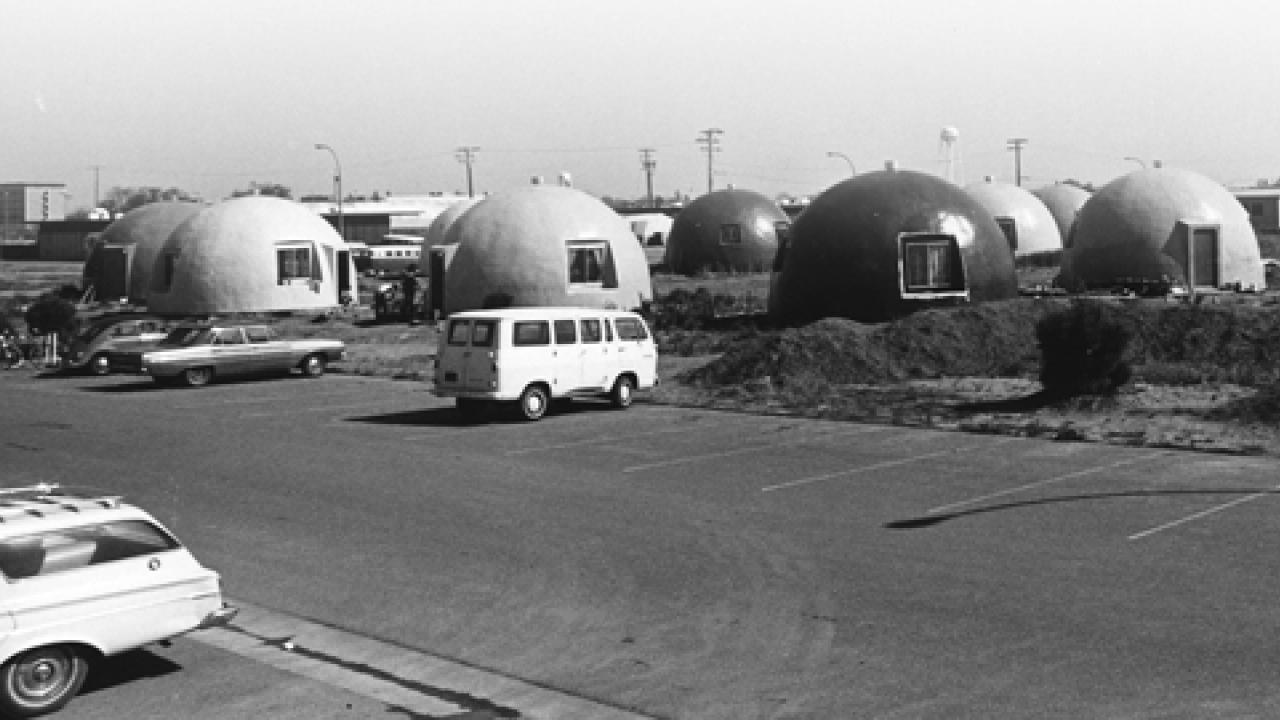A campus task force will help envision the next generation of sustainable student living and learning communities as the Baggins End Domes, after 39 years, will close this summer due to health and safety issues, accessibility problems and structural concerns.
In a Feb. 1 letter, Emily Galindo, associate vice chancellor for Student Affairs and director of Student Housing, informed Domes residents that their leases will not be renewed when they expire at the end of July.
“Student Housing has not come upon the decision … easily," Galindo wrote, citing "the uniqueness and longevity of the community and how it is loved by a core group of students, alumni and supporters.”
The history of the Domes
The Baggins End student cooperative, south of the Orchard Park apartments in the northwest corner of campus, includes 14 geodesic domes that today house 26 students. The cooperative also includes three acres of common gardens. The domes were constructed in 1972.
Galindo's letter followed a Jan. 24 forum on the Domes' future — a gathering of about 60 people, many of them residents or former residents. The forum included a presentation by students documenting the history of the Domes and their ongoing contributions to the university community.
Innovative structures when they were first built, the domes have served as a demonstration of eco-friendly living. They have been the subject of research, tours and even UC Davis courses.
Baggins End emphasizes community, cooperation and responsibility. Residents care for the buildings, raise chickens, grow vegetables and share weekly meals.
"We are a lifestyle, a community," Michelle Yates, a graduate student who lives in one of the Domes, said during the forum. "Baggins End, in its uniqueness, is part of what puts UC Davis on the map."
Concerns on both sides
Domes' residents voiced concern for keeping their community together in the short term while the Sustainable Living and Learning Task Force explores the long-term future for sustainable student living-learning communities on campus.
In her letter to the residents, Galindo recognized their desire to remain together and offered to work with the community on potential solutions. She said she has assigned a staff member to act as a resource for the Domes residents.
During the past six months, Student Housing staff members have worked with the residents to address concerns that began with a report of degradation of foam within the domes. Numerous structural, health and safety, and fire code issues also were identified, along with the need for improvements required by the Americans with Disabilities Act.
A company that inspected the Domes estimated that it would take more than $600,000 -- or $43,000 per dome -- to resolve problems with the structures’ foam interior. Chris Adamson, a state-certified access specialist in UC Davis’ Design and Construction Management unit, estimated that it would cost an additional $300,000 to make the ADA improvements.
The work at the Domes would in turn require additional renovations to bring the structures up to current building code requirements.
Substantial costs
“It is our shared conclusion that the costs to address each of these concerns, along with the work required to meet the current building codes, remains very substantial, and based on the feedback at the forum, it is clear that such a significant financial investment in the current Domes structures is not a good use of students’ rents, the present reserve and a loan that would create a substantial liability for future residents,” Galindo wrote in her letter.
As a self-supporting unit, Student Housing does not receive state or campus funding. Each housing area also must operate as a self-supporting unit.
Today, each dome resident pays $2,712 for a yearlong lease. Necessary improvements could more than double the rent to $5,811 for 2011-12, Galindo said.
In response to strong student interest, vice chancellors Fred Wood of Student Affairs and John Meyer of Administrative and Resource Management late last year created the Sustainable Living and Learning Task Force. Its charge is to create a shared vision for a new community that will value the student cooperative residential experience.
The task force is chaired by Bob Segar, associate vice chancellor for Campus Planning and Community Resources, and includes students (some of whom are living in the Domes), faculty and staff. At the January forum, Segar said the task force will meet regularly in the hope of developing a plan by June for the next generation of housing inspired by the legacy of the Domes community.
On the Web
Charge letter to the task force, plus inspection reports and other documents.
Media Resources
Dave Jones, Dateline, 530-752-6556, dljones@ucdavis.edu
